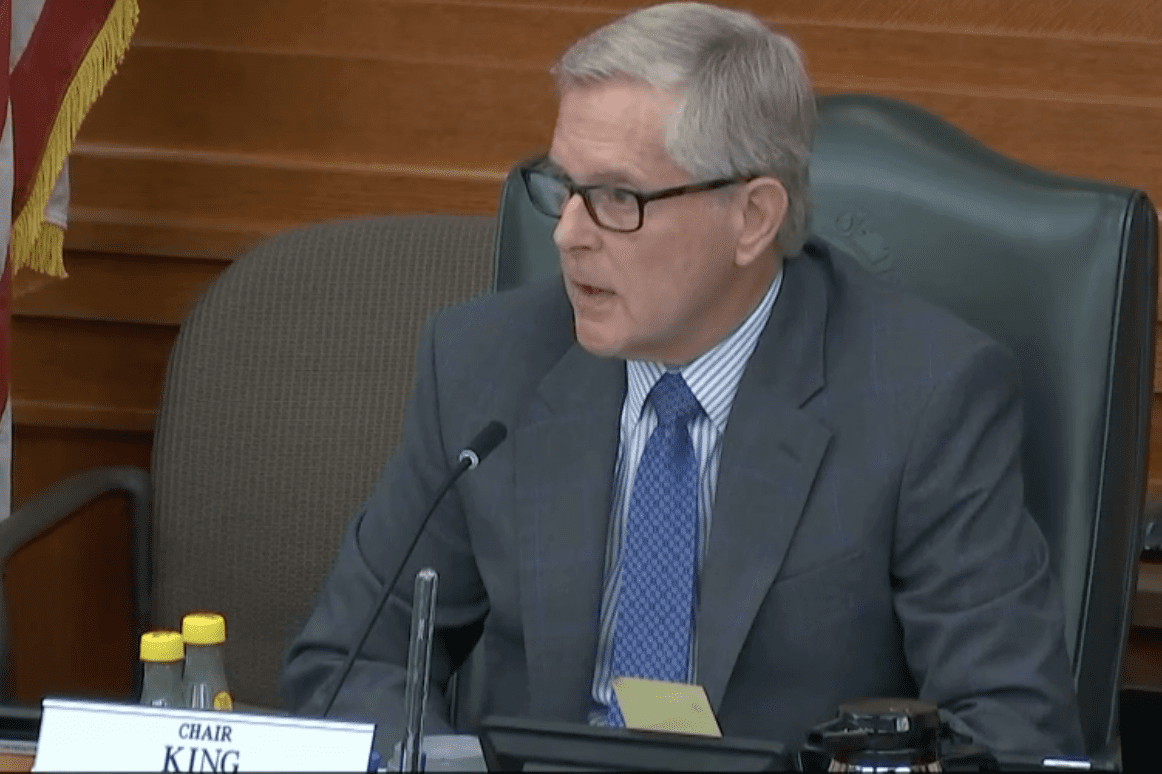This article has been updated since publication.
Republicans’ proposed new map of Texas congressional districts cleared its first hurdle as House committee members approved the mid-census redistricting plan on a party-line vote Saturday. The House is now scheduled to vote on the plan Monday.
The partisan plan flips five congressional districts from Democrat to Republican, providing the GOP an opportunity to win 30 of the state’s 38 U.S. House seats in the 2026 midterm elections.
On Saturday morning, members of the House Select Committee on Congressional Redistricting voted 12-6 to advance the redistricting measure, House Bill 4, after hearing 10 hours of public testimony on Friday.
HB 4 must be approved by the full Texas House before moving to the state Senate for consideration.
Democrats strongly oppose HB 4, claiming it is racially motivated to disenfranchise minority voters.
House Democrats have threatened to “use every available method” to block the Republican redistricting plan, including fleeing the state to break quorum.
State Rep. Todd Hunter (R-Corpus Christi), laid out the Republican redistricting plan during Friday’s hearing.
Hunter said the new congressional map was drawn primarily based on partisan politics.
“I’m not beating around the bush. I’m telling you that we have five new districts, and those five districts are based on political performance,” he said.
Each of the five districts—9, 28, 32, 34, and 35—were redrawn to trend Republican. Four of the five are majority-minority Hispanic; two of those are in South Texas.
“Political performance doesn’t guarantee electoral success. That’s up to the candidates,” said Hunter. “But it does allow Republican candidates the opportunity to compete in these districts.”
Hunter explained the current legal criteria for congressional redistricting, “whether you agree or disagree.”
In addition to longstanding principles such as equal population (now nearly 767,000 per district) and geographic compactness, Hunter noted that race remains a factor in redistricting.
Although race cannot be a predominant factor in drawing maps, Section 2 of the Voting Rights Act prohibits enactment of any plan that restricts minority citizens from having an opportunity to elect their preferred candidate of choice if certain circumstances exist.
He also detailed two recent changes:
—Districts can be drawn for partisan political advantage, per a 2019 U.S. Supreme Court decision in Rucho v. Common Cause establishing that “partisan gerrymandering claims present political questions beyond the reach of federal courts.”
—Majority-minority districts are not required to be drawn for “coalitions” of minority groups and are no longer protected under Section 2 of the Voting Rights Act, per the U.S. Fifth Circuit’s 2024 ruling in Petteway v. Galveston County.
Hunter said the map in HB 4 follows both these cases.
He noted that the current congressional map drawn in 2021 also relied primarily on partisanship as allowed by Rucho, but that Petteway was not yet established.
“The law has changed quite a bit since then,” said Hunter. “These maps follow the law.”
Tarrant County relied on the same legal changes when redrawing its commissioners court districts earlier this year to increase the Republican majority’s partisan advantage.
State Rep. Katrina Pierson (R–Rockwall) noted that the new Congressional Districts 18 and 30 now have a majority-Black citizen voting age population (CVAP).
“So overall, Black voters go from zero to two majority-Black CVAP seats out of the 38 seats in Texas?” she asked Hunter.
Hunter confirmed, and said the number of districts with Hispanic-majority CVAP also increased compared to the 2021 map, from seven to eight.
He added that “anybody can run and win” in the districts.
U.S. Rep. Jasmine Crockett (D-TX30) testified against HB 4 on Friday and said if the bill passes, she intends to sue.
“I have every intention of going to court as soon as possible to get an emergency action done, because I do feel as if there is a violation right now, if this map passes, of the Voting Rights Act for so many reasons,” she said.
When questioned, Crockett acknowledged she had not read the Petteway decision.
Several members of Congress whose districts were redrawn testified Friday against the changes. Crockett and others also spoke at committee hearings held before the map was released on July 30 as part of HB 4.
The House committee held three previous hearings, including field hearings in Houston and Arlington, while the Senate’s committee on congressional redistricting held four hearings in Austin with testimony taken via videoconference.
A majority of speakers at the hearings said they opposed the redistricting plan, including most of the more than 500 people who showed up Friday to testify.
Several Democrats claimed the testimony proved the plan is unpopular.
During committee discussion following public testimony on HB 4, State Rep. Senfronia Thompson (D–Houston) told Hunter that “most people” are against the proposed redistricting.
Hunter disagreed, noting that hearing participants don’t represent opinions statewide.
“From a Republican standpoint, there’s a lot of people supporting this,” he said. “It’s like every bill there is. Some like it, some don’t.”
Texas Republicans first floated the idea of mid-census redistricting in 2024, following the Petteway decision.
In July of this year, the U.S. Department of Justice sent Gov. Greg Abbott a letter expressing concern that four Texas congressional districts were impermissible racial gerrymanders, citing Petteway and other cases. Abbott then added congressional redistricting to his agenda for the ongoing special legislative session.
Other states are also considering redistricting ahead of the 2026 mid-term elections, including Florida’s Republican Gov. Ron DeSantis and Democrat Gov. Gavin Newsom of California—although California voters gave away lawmakers’ redistricting authority to an independent commission.
As of Saturday, 54 Texas House Republicans had signed on as co-authors of HB 4.
The House is scheduled to reconvene on Monday at 3 p.m. The only item on the agenda is HB 4.
To conduct business, a two-thirds quorum—100 of the 150 members—must be present.





